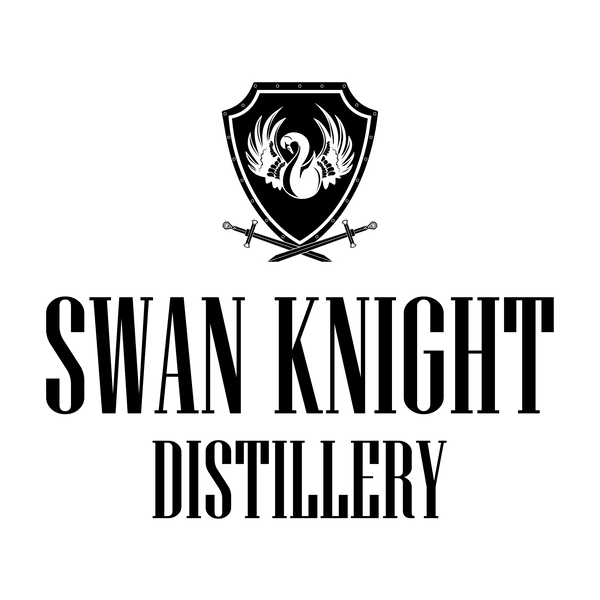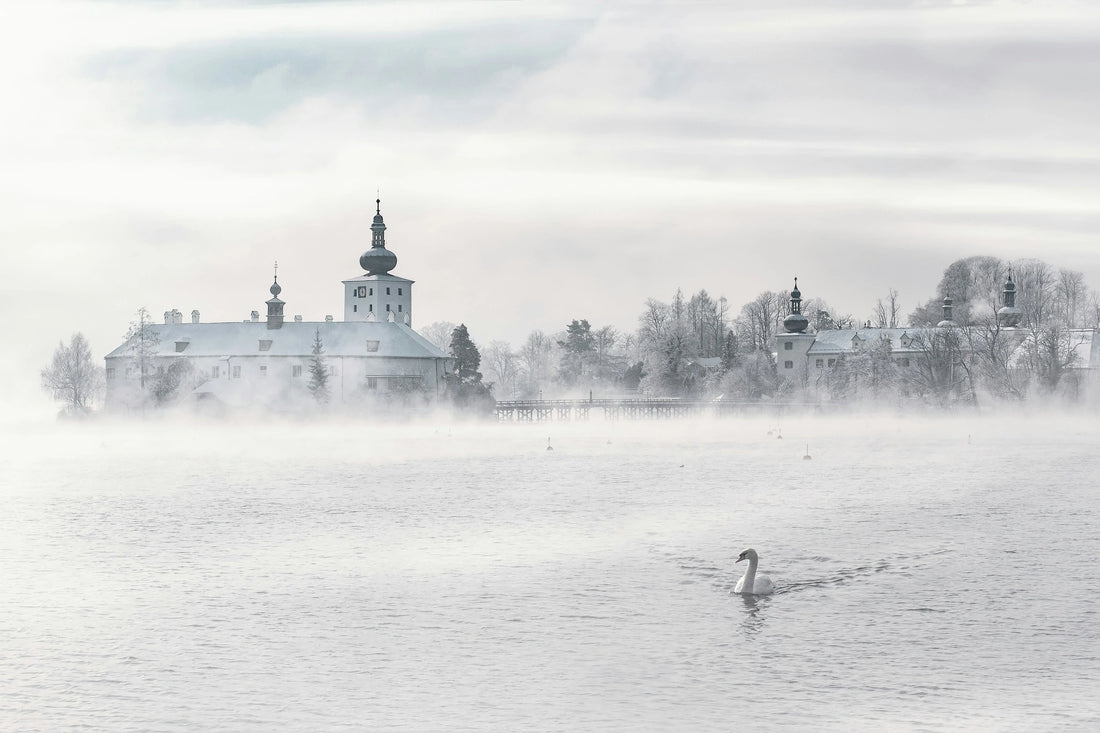Table of Contents
The Legend
The Swan Jewel
The history of the Swan Knight
Fairy Tales linked to the Swan Knight
Noble families linked to the Swan Knight
The Legend
There are many tales that tell the story of the legend of the Swan Knight, also known as the Knight of the Swan. Most of the stories centre around a mysterious knight whose boat is towed by a swan, who rescues and marries a damsel in distress. The tale goes, that the damsel is sworn to never ask his name or where he came from. Years later, she asks the forbidden question, and the knight sails away into the sunset, never to return. In this post, we will delve into some of those stories, where they came from and try to separate some of the facts from the fiction.
The Swan Jewel
The discovery of a Swan Jewel in Dunstable, Bedfordshire, is what first drew our attention to the Swan Knight. The jewel was unearthed during excavations at the Dominican Friary in 1965 and is thought to date back to around 1400AD. The ornate jewel is made of white enamel, which has been hand crafted to depict the shape of a swan, with a gold chain attached. This jewel is deemed to be of considerable historical interest and is thought to have some significance in many of the stories surrounding the Swan Knight. This historical artifact is now kept at the British Museum, with images of the jewel available on their website.
The history of the Swan Knight
The deeper you delve into the history of the Swan Knight, the more intriguing it becomes.
The earliest mention of this story appears in a French poem dating back to the time of the First Crusade (1096AD-1099AD). Such poems would often describe heroic acts and this one made the Swan Knight out to be the father of Godfrey of Bouillon (Encyclopedia Britannica, 2012). Godfrey of Bouillon became the ruler of the Kingdom of Jerusalem in 1099AD (Encyclopedia Britannica, 2022).
In the 14th century, numerous iterations of the story provide a little more detail. The Swan Knight, who is also known as "Le Chevalier au Cigne", is said to be referred to as Helias or Helyas (Encyclopedia Brittanica, 2012). The Swan Knight comes to the rescue of Beatrix (sometimes referred to as either Isomberte or Elioxe), the daughter of the Duchess of Bouillon, when the Count of Frankfort or Saxony, challenges the right to the Duchy (Newman, 2018). The Emperor of Germany decrees, that each side nominate a knight, in order that the right be settled by a duel. The Swan Knight is victorious in the battle and goes on to marry Beatrix, thereby becoming the Duke of Bouillon (Newman, 2018). In some versions of the story, the Swan Knight forbids that anyone ask his name.
They go on to have two children, a daughter and a son. Legend suggests that when Ida, their daughter, turns 7 years old, Beatrix, asks the Swan Knight his name. As a result, the Duke departs with his swan brother (more on the brother in the next section), leaving behind an ivory horn for protection. During a fire at the castle, legend has it that a swan is seen flying away with the horn.
Fairy tales linked to the Swan Knight
Numerous versions of the story are also linked to a Northern European fairy tale called the "The Swan Children" (Hibbard, 1963) or "The Six Swans" (Schlauch, 1969).
One of the earliest versions of the swan children fairy tale appears around 1190AD, written by Johannes de Alta Silva and called "Dolopathos sive de Rege et Septem Sapientibus". It is a Latin version of the "Seven Sages of Rome" (Mickel et al, 1977). The story goes that a young lord becomes lost in an enchanted forest and comes across a woman in the act of bathing, whilst holding a gold necklace. They fall for each other, whereupon the young lord takes her to his castle where, as she foretold, she gives birth to six boys and a girl, each with a golden chain around their necks. However, her evil mother-in-law swaps the children for seven puppies and orders a servant to take the children into the forest, never to be seen again. The servant, not wishing the children to come to any harm, abandons them under a tree. The young lord is informed by his wicked mother that his wife has given birth to puppies and as a result, he punishes his wife by burying her up to her neck for seven years.
Sometime later, the young lord is hunting in the forest and comes across the children. As a result, his mother sends the servant back into the forest to find them. The servant comes across the boys bathing in the form of swans, while their sister guards their gold chains. He steals the chains, preventing the boys from turning back into human form.
The gold chains are taken to a goldsmith to be melted down and made into a goblet. However, the swan-boys fly and land in the young lord's pond. The sister, who still has her chain and can change between swan and human forms, goes to the castle to ask for food for her brothers. Eventually, the young lord asks her about the children’s origin and the truth comes out.
In the meantime, the goldsmith has been unable to melt down the gold chains and has kept them for himself. The chains are returned to the swan-boys but one of the precious chains has been damaged. As a result, one of the swan-boys is unable to change back into his human form. He, therefore, continues his life as a swan (becoming known as the swan brother). Legend has it, that it is this swan, who tows the boat for the Swan Knight (Mickel et al, 1977).
As an aside, it is worth noting that it is a focus of alchemists to transform base materials into gold, so it is not, therefore, surprising that the swan children required gold chains in order to change form between swan and human. It is perhaps worth considering, that the alchemy symbol for gold is a circle with a point at its centre (☉), which is not too dissimilar to a chain around a neck, when viewed from above.
A German version of the Swan Knight legend tells of a Knight of the Swan called Lohengrin. It is likely that the earliest version appeared in the poem "Parzival", written around 1210AD by Wolfram von Eschenbach (Encyclopedia Britannica, 2012). The story goes that Lohengrin is the son of Parzival (a Knight of the Holy Grail). Lohengrin leaves the Castle of the Grail in a boat, towed by a swan, and goes to the aid of a maiden called Elsa of Brabant. Having saved her, Lohengrin goes on to marry her and eventually, he returns to the Castle of the Grail (Encyclopedia Britannica, 2012).

There are several subsequent versions, such as, "Lohengrin" written around 1275AD-1290AD, "Wartburgkrieg", "Schwanritter" [Swan Knight] and the anonymous 15th century version titled "Lorengel" (Encyclopedia Britannica, 2012). "Lorengel" tells a similar tale of the Swan Knight rescuing a damsel in distress. However, it makes no mention with regard to the taboo around the Knight’s name or the origin from whence he came (Kalinke, 1991). "Lorengel" was used as the basis for the opera "Lohengrin" by the 19th century composer, Richard Wagner, and was first performed on August 28th, 1850 (Encyclopedia Britannica, 2012). The legend became linked with the German town of Kleve (formerly known as Cleves), where the rulers at the time, took the swan as part of their crest. A tower of the castle was named "Swan Tower" and a statue of the Knight and his swan was erected (Encyclopedia Britannica, 2012).

Noble families linked to the Swan Knight
The de Bohun family of Hereford claimed to be descents of the Swan Knight and have used the swan as a badge, as far back as the 13th century, to symbolise their heritage. The Swan Knight was legendary during Edward I's reign (1272AD-1307AD), who held a Feast of the Swans at Whitsuntide, as a celebration following the ceremony of knighthood for his son, who later went on to become King Edward II. (Newman, 2018).
Throughout history, a number of swan artifacts passed between families, with Eleanor de Bohun (Duchess of Gloucester), along with her sister Mary, inheriting a swan badge from Humphrey de Bohun, who was the 2nd Earl of Northampton, 6th Earl of Essex and 7th Earl of Hereford (Newman, 2018). Eleanor later mentions the Bohun Swan in her will, with the swan badge, passing on to the Stafford family upon her death, with Henry Stafford (2nd Duke of Buckingham), displaying the Bohun Swan upon his banner (Newman, 2018).

Following the death of Eleanor, her sister Mary, later goes on to marry Henry, who became Henry IV, and they had four sons: Henry V, Thomas (Duke of Clarence), John (Duke of Bedford) and Humphrey (Duke of Gloucester). They also had two daughters; Blanche who married Louis III (Elector Palatine) and Philippa who married Erik (King of Sweden, Norway & Denmark) (Newman, 2018).
Although the legend of the Swan Knight takes on various forms throughout history, there is a common theme that runs through many of them. Historical records, along with numerous archaeological artifacts, such as the jewel found at Dunstable Priory, suggest that the legend of the Swan Knight, originates from the story of a prominent knight, esteemed for his bravery.
References
Encyclopedia Britannica. (2022) Godfrey of Bouillon. URL: https://www.britannica.com/biography/Godfrey-of-Bouillon. Date visited: August 31st, 2023.
Encyclopedia Britannica. (2012) Chevalier au cygne. URL: https://www.britannica.com/topic/Chevalier-au-cygne. Date visited: August 31st, 2023.
Encyclopedia Britannica. (2012). Lohengrin. URL: https://www.britannica.com/topic/Lohengrin-German-legendary-figure. Date visited: August 30th 2023.
Hibbard, Laura A. (1963). Medieval Romance in England. New York: Burt Franklin. p. 239.
Kalinke, Marianne E. (1991) Lorengel. In Norris J. Lacy (Ed.), The New Arthurian Encyclopedia, pp. 282–283. New York: Garland. ISBN 0-8240-4377-4.
Mickel, Emanuel J.; Nelson, Jan A., eds. (1977). La Naissance du Chevalier au Cygne (preview). The Old French Crusade Cycle. Vol. 1. Geoffrey M. Myers (essay). University of Alabama Press. ISBN 9780817385019. (Elioxe ed. Mickel Jr., Béatrix ed. Nelson).
Newman, Bev. (2018) The Origin of the de Bohun Swan. URL: https://bevshistoricalyarns.wordpress.com/2018/01/05/the-origin-of-the-de-bohun-swan/. Date visited: August 31st, 2023
Schlauch, Margaret (1969). Chaucer's Constance and Accused Queens. New York: Gordian Press. p. 80. ISBN 9780877520979.
Wikipedia. (2023) Lohengrin postcard. URL: https://upload.wikimedia.org/wikipedia/commons/4/48/Lohengrin-kitsch.jpg. Date visited: August 31st 2023.
Wikimedia. (1908) The de Bohun Swan and Stafford Knot on the banner of Henry Stafford 2nd Duke of Buckingham. By R. B. Utting - English Heraldry, by Charles Boutell, Public Domain, URL: https://commons.wikimedia.org/w/index.php?curid=5101772. Date visited: September 1st 2023.
Yellacat Ranch. (2000) Chivalric Lore – Yellacat Ranch. URL: https://www.yellacatranch.com/chivalric-lore/. Date visited: August 31st 2023.
Disclaimer
All content provided in this blog post is for informational and educational purposes only. The owner of this blog post makes no representation as to the accuracy or completeness of any information in this blog post or found by following any link within this blog post. The owner will not be liable for any errors or omissions in this information nor for the availability of this information. The owner will not be liable for any losses, injuries, or damages from the display or use of this information. These terms and conditions of use are subject to change at anytime and without notice.

